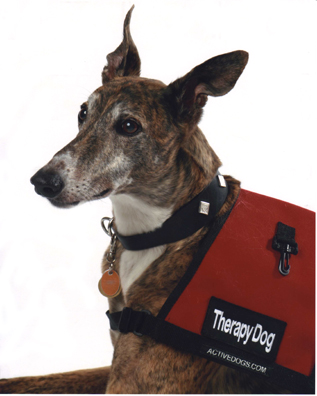Greyhound Information
Misconceptions and myths about greyhounds and racing answered. Greyhound history and trivia too.
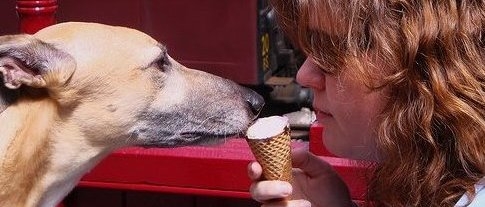
History
-
We aren't sure where Greyhounds originated. Many say the middle east perhaps as long as 8,000 years ago. Paintings of greyhound type dogs can be found in the pyramids. These dogs were treated with reverence by ancient Egyptions and highly regarded by other cultures in the Middle East and were sometimes mummified with their owners. Others say that true greyhounds originated from the ancient Celts from Eastern Europe or Eurasia. Either way they are a very ancient breed that Homer talked about in The Odyssey. The greyhound is the only breed of dog mentioned in the Bible (King James Version)
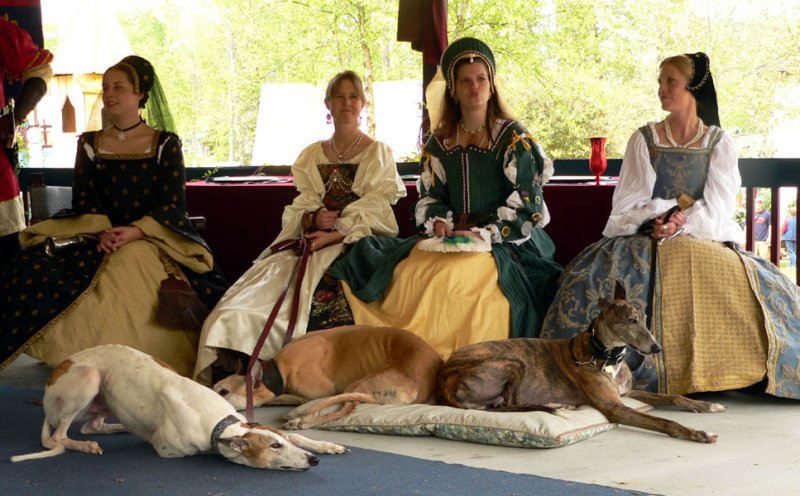
-
Where the greyhound got its name is unknown. It could derived from the Saxon words Gech or Greg, meaning - Greek - because they thought the breed originated in Greece. The word could also have come from the centuries when only aristocrats (Great people) were allowed to own greyhounds. It may also have been derived from the term gazehound - a dog that hunts by sight. The name has nothing to do with the greyhound's color. Gray is actually a very rare color for a greyhound.
-
Most greyhounds today can trace their bloodlines directly back to greyhounds bred in England in the early 1800's.
-
Greyhounds arrived in the Americas with Christopher Columbus. They became very popular later as the midwest was settled to keep the jack rabbit population under control. Greyhounds were also used then and are still bred in some areas, to hunt and kill coyotes.
-
US Greyhound racing as we know it developed in the early 1900s. It is regulated by the National Greyhound Association. There are currently only 2 operational greyhound race tracks in WV. Most of the tracks were in Florida, before they all closed in 2020.
- When you adopt a greyhound you will be in good company. Famous greyhound owners include Alexander the Great, Cleopatra VII, Henry VIII, Anne Boleyn, Queen Elizabeth, Prince Albert and Queen Victoria, General George Custer, Bart Simpson, Bo Derek, Cesar Millan, JK Rowling, Charlie Watts, US Presidents George Washington, Teddy Roosevelt, John Tyler and Rutherford B Hayes, King Canute, Louis XV, Sir Walter Scott, Tea Leoni, Al Capone, Babe Ruth, Jack Dempsey, Roy Rogers, Tony Stewart, Vinnie Jones, Trent Reznor, Willem Dafoe, David Duchovny, Neko Case, Merv Griffin, Janet Leigh and Toni Curtis, Jerry Lewis, Dean Martin, Leonard Nimoy, Ed Sullivan, Betty White, Uri Geller, Mac Davis, Bea Arthur, Frank Sinatra, and Veronica Lake to name just a few.
Frequently Asked Questions and Myths About Greyhounds:
Are greyhounds high energy? No. They are very calm and lazy and are known as 45mph couch potatoes. Although they are athletes; they are sprinters, so get tired very quickly with only a small amount of exercise.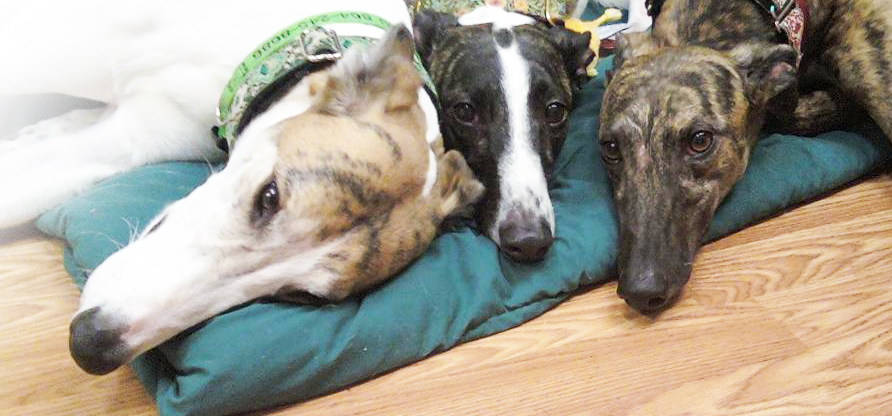
Do you need a large yard to have a greyhound? No. See the above answer. One dog magazine recently rated greyhounds as one of the best apartment dogs, because of their calm, quiet nature.
Can Greyhounds live with cats and other small animals? Yes about 75 percent can. We do run into a few that have too high of a prey drive to live with anything small that resembles a squirrel or bunny. We test our greyhounds with cats and small dogs. We have had greyhounds that were able to be placed with birds, chickens, goats and even rabbits.
Where do you get greyhounds? Most of our greyhounds came from race tracks in Florida. Those all closed in 2020. We also took dogs from Alabama but that track also closed in 2020. There are only two active race tracks in the country and those are in WV. With few greyhounds and many adoption groups wanting them, we don't get many any more. We work with a few owners and trainers that we know well. They call us when they have greyhounds ready to retire and have the dogs delivered to us or we arrange for volunteers to transport the dogs. The trainers provide us valuable information about each greyhound's behavior and personality before they arrive. We also occasionally get some retired brood and stud dogs from greyhound breeding farms and returned greyhounds from our adopters and from other groups that have closed down.
Do greyhounds really make great pets? Aren't they high strung and aloof? Yes they make great pets! No they aren't typically high strung or aloof. Like people, greyhounds can have personalities that vary between shy to exceptionally outgoing, though. Most are very needy and follow their owners around, but a few are happier being a wallflower and not being part of the activity. Racing greyhounds are very calm, lazy dogs known as '45 mph couch potatoes'. Most nap all day, so definitely aren't high strung. Because they are so calm and walk up to people politely, instead of jumping on people and acting crazy, people often assume that they aren't friendly. They are just well behaved, polite and lower key than more hyper breeds, but love their people just as strongly, if not more so. Greyhounds are typically handled by a variety of different people from track vets, to lead outs, to trainers to puppy raisers and most are very social and used to grooming, being massaged and having their feet looked at and nails trimmed. They are well traveled, often racing at several tracks and are used to being kenneled around a lot of other dogs. Because of their upbringing they tend to be better socialized and more at ease in a variety of settings than the average house pet.
Where do your rescued greyhounds come from? Only from abusive pet owners or shelters, NOT from race tracks, racing owners or racing greyhound farms. Fortunately the number of true rescue greyhounds we come across are few and far between. They are greyhounds that come out of bad, abusive or neglectful pet homes and greyhounds that were abandoned by their pet owners at shelters. We have gotten some from vets that were asked by a pet owner to put their unwanted greyhound to sleep because of a health issue they didn't want to deal with or just because they no longer wanted the dog. We consider true rescues to be greyhounds that are starving, sick, uncared for and in danger. In contrast, the retired greyhounds we get to rehome are in peak physical condition. They are well taken care of and are simply on their second career as a pet. Most greyhound owners and trainers have many of their racers as pets at home, but they can't keep every greyhound. They know there are plenty of good adopters wanting greyhounds and waiting on them to retire. Racing owners and trainers work closely with our group and work hard to arrange and pay for transport to get retirees transported to us for adoption. Most love to stay in touch with their dog's adoptive owner and keep up with their retired life. The retired racers are never in any danger and are not abused or neglected and we are not rescuing them from any bad situation or person. As you can imagine that term can be offensive to the people that spend their lives raising and caring for greyhounds before arranging for us to get them. We got most of our retired racers from Florida, since that is where most tracks in the US were located. Unfortunately, all of the Florida tracks closed in 2020. Alabama closed their last track in April of 2020. Arkansas closed their track in 2022, leaving 2 tracks in West Virginia.
Are all racing greyhounds abused? No. Racing greyhounds are very valuable. The average greyhound has more than $3,500 invested into it in breeding fees, care and training, before it ever starts its racing career. Because of the value of these dogs, owners look for trainers that will take the best care of their dogs, so that they will run well. Trainers work with racers because they enjoy working with dogs. Trainers and owners only make money when the dogs place 1st through 4th in a race. First place and eighth place are usually separated by a second or less. Any injury or abuse would slow the dog down and the owner and trainer would make no money. Trainers do everything they can to avoid injury. The trainers we get our greyhounds from treat dogs in their care like the elite athletes they are. Most have greyhound pets of their own at home and love the breed. Sadly, nearly all the abuse cases we have seen, have been at the hands of adopters that have neglected, starved, refused to give needed vet care or allowed their greyhound to become dangerously obese.

Are greyhounds forced to race? No. Most greyhounds LOVE to run and chase more than anything. Racing greyhounds don't have jockeys, they are free to stop running at any time during a race. Once you own a greyhound, you will see that when they are scared or nervous they turn into statues. It is nearly impossible to force them to do anything. We get a few greyhounds that never make it to the race track because they show no interest in racing. If they don't want to run, they are simply retired. Only greyhounds that are exceptionally focused and keen on the lure will win a race. A greyhound whose heart isn't in it would never push itself fast enough to win. Greyhounds were bred for thousands of years to hunt and chase, just like herding breeds were bred for herding and other breeds were bred for specific jobs like retrieving. It is in their blood and it is what they want to do more than anything else. The reason we tell people not to let them off leash in an unfenced area is because they want to run and WILL chase a plastic bag as it blows across the street or a squirrel in your neighbor's yard. 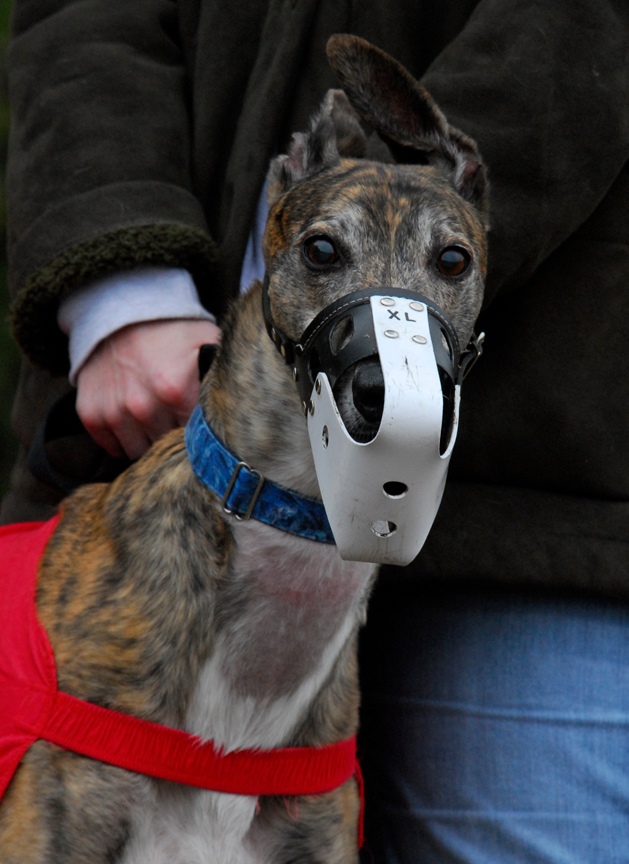
What do they chase when racing? The lure they chase is a stuffed animal made of fake fur. Depending on the track, the lures look like a large rabbit or a bone. They do NOT chase live animals at the track and live animals aren't allowed to be used in training either. Anyone caught using live animals will be banned from the sport for life.
Do racing greyhounds wear muzzles because they are vicious? No. Racers that show any aggression towards other racers during a race are banned from the track. Muzzles help determine the winner in photo finishes. Greyhounds have very fragile thin skin and race with their mouths open. A bump with a tooth at 40+ mph could injure a greyhound, so muzzles also help prevent injuries. Kennel muzzles (different than the racing muzzles) are used because of the number of dogs in one small area at the track kennel. Any time you have 70 dogs, that may or may not know each other, in one room you are bound to have disagreements. With their thin skin, even rough play, can leave a gash and a dog fight is catastrophic. Muzzles keep all the racers injury free and safe on and off the track.
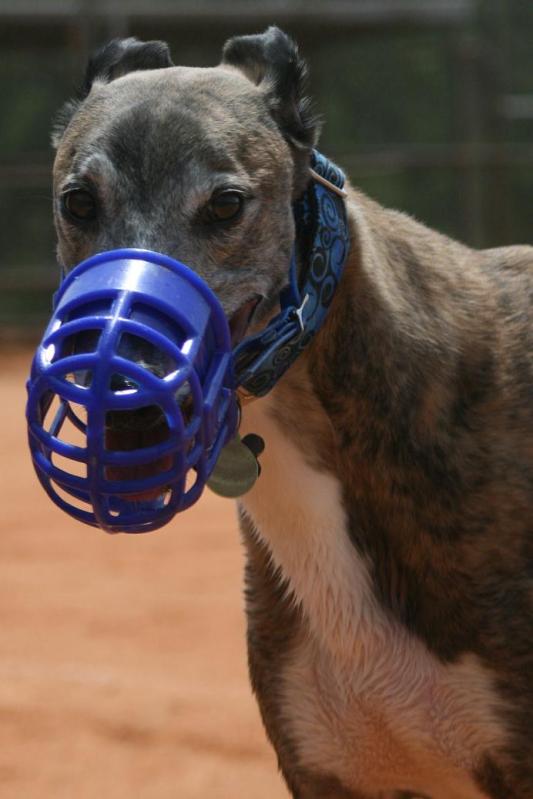 I met a greyhound that was afraid of everything, was it abused? Probably not. Genetic shyness runs in some lines of greyhounds (and other breeds) and can also be the result of poor socialization as puppies in that critical first three months of life. Although most greyhounds are very social because of the handling they got as puppies and as adults, a few don't get that. Puppies need to be socialized to all types of people - Males, females, children, different ethnicities, men with beards and ball caps - etc during the first critical 3 month socialization period. Guide Dog and service dog organizations recommending introducing puppies to at least 100 different people, in the first three months, so they are very comfortable working around everyone as adults. Puppies also need to be introduced to new sights and sounds - things like riding in vehicles, buildings, different flooring, stairs, cats, small dogs, city traffic etc. Anything the dog will experience, in its adult life, needs to be introduced in the first 3 months. Anything the puppy is not exposed to in this first 3 months of life can make it uncomfortable and fearful the rest of its life. We all understand that wild animals MUST be handled by humans as babies or they will remain wild and afraid of humans their entire lives; puppies aren't any different. One of the reasons we think greyhounds make the best pets is because of all the handling by people that they DO get as puppies. It is pretty easy to tell if a dog has been abused, a dog that has been abused may be afraid of men and sticks for instance (the things that actually hurt him). A dog that is genetically shy or not properly socialized is likely to be terrified of the man, the stick, going thru doorways, riding in cars, children, trashcans, planes overhead, fast movements, loud noises or anything it wasn't exposed to as a puppy (things that obviously could never have caused it any harm).
I met a greyhound that was afraid of everything, was it abused? Probably not. Genetic shyness runs in some lines of greyhounds (and other breeds) and can also be the result of poor socialization as puppies in that critical first three months of life. Although most greyhounds are very social because of the handling they got as puppies and as adults, a few don't get that. Puppies need to be socialized to all types of people - Males, females, children, different ethnicities, men with beards and ball caps - etc during the first critical 3 month socialization period. Guide Dog and service dog organizations recommending introducing puppies to at least 100 different people, in the first three months, so they are very comfortable working around everyone as adults. Puppies also need to be introduced to new sights and sounds - things like riding in vehicles, buildings, different flooring, stairs, cats, small dogs, city traffic etc. Anything the dog will experience, in its adult life, needs to be introduced in the first 3 months. Anything the puppy is not exposed to in this first 3 months of life can make it uncomfortable and fearful the rest of its life. We all understand that wild animals MUST be handled by humans as babies or they will remain wild and afraid of humans their entire lives; puppies aren't any different. One of the reasons we think greyhounds make the best pets is because of all the handling by people that they DO get as puppies. It is pretty easy to tell if a dog has been abused, a dog that has been abused may be afraid of men and sticks for instance (the things that actually hurt him). A dog that is genetically shy or not properly socialized is likely to be terrified of the man, the stick, going thru doorways, riding in cars, children, trashcans, planes overhead, fast movements, loud noises or anything it wasn't exposed to as a puppy (things that obviously could never have caused it any harm).
 Can I adopt/buy a greyhound puppy? Greyhound puppies available for adoption are very rare and are quickly snapped up by adoption volunteers and never available to the public. Under 200 AKC show greyhounds are bred each year for show or pets. These are very different from racers in looks and temperament, almost like an entirely different breed. You may be able to get on a waiting list with an AKC breeder, but most litters are spoken for before they are ever born. You should expect to pay between $2500 to $5000 for a show greyhound or a racing bred greyhound puppy. Greyhound puppies are very hyper and best left to the experienced dog owner, though. They require a large fenced yard and an owner that is willing to supervise at all times and committed to draining their endless energy every day with hours of play and exercise. Greyhound puppies are much different than the calm, laid back, lazy adult greyhounds.
Can I adopt/buy a greyhound puppy? Greyhound puppies available for adoption are very rare and are quickly snapped up by adoption volunteers and never available to the public. Under 200 AKC show greyhounds are bred each year for show or pets. These are very different from racers in looks and temperament, almost like an entirely different breed. You may be able to get on a waiting list with an AKC breeder, but most litters are spoken for before they are ever born. You should expect to pay between $2500 to $5000 for a show greyhound or a racing bred greyhound puppy. Greyhound puppies are very hyper and best left to the experienced dog owner, though. They require a large fenced yard and an owner that is willing to supervise at all times and committed to draining their endless energy every day with hours of play and exercise. Greyhound puppies are much different than the calm, laid back, lazy adult greyhounds.
Are greyhounds raised in puppy mills? Never! Greyhounds have an average of $3500 invested in them by the time they reach the race track. They are much too valuable to be kept in small cages and get substandard care. In fact, to be a successful racer they must be raised in long 50 to 100 yard dog runs that encourage them to run and race each other (see photo below). Greyhound farms have these long runs or even larger pens for each litter. Each litter has access to a area larger than most dog parks to play in while growing up. Greyhound puppies raised as pets in small backyards and homes, without access to this type of running, are not muscled and strong enough to be able to race safely. Greyhounds are not crated, until they go into race training, when they are over a year old. Then they are calmer and learn to rest in between training sessions and conserve their energy for races.
What is a greyhound's early life like? Greyhounds have a unique upbringing. They usually get to stay with their mothers for longer than pups of other breeds. They are born on a farm in an indoor climate controlled kennel with access to the outdoors. When they are older they are moved with their mother and littermates to a large outdoor run. They will eventually be weaned, but often the mother is allowed to stay with the pups as long as she wants to, after weaning. It is not uncommon for mothers to stay with their pups for the entire first year, until they go off to race training. Females usually have only one litter a year and most owners retired the female after 3 or 4 litters. Each litter usually stays together. A larger litter may be put into two adjoining runs as they get older. Two small litters that are the same age may be put in the same run together so they have playmates. They have access to long dog runs that are usually 50 to 100 yards long. This encourages them to race each other up and down all day and builds strong bones and muscle necessary for racing. When they are a year old the litter will be sent together to race training. They will learn to wear collars, leashes, muzzles and racing silks at this time. They will also be crate trained and potty trained. They will practice chasing a lure and breaking from the starting box. At 15 to 18 months the litter is sent to the race track, often still together. Greyhounds are very pack oriented because of living with their littermates and their mother for most of their lives. Most have great dog body language skills and play well with other greyhounds because of this upbringing. 
What is their racing life like? US racing greyhounds are required to live in a kennel compound at or near a the track they race at. They live in large crates in indoor, climate controlled, racing kennels. There are around 70 dogs in each racing kennel. There are many of these racing kennels at each track. There are two levels of crates. Males are in the bottom crates. The smaller females, that are easier to boost up, are in crates above the males. The crates are used to give each dog their own space to rest. Each dog has its' own apartment. The trainer spends most of the day in the kennel with the dogs feeding, cleaning, grooming, training, and turning the dogs out to potty. Each racing kennel has a couple sandy fenced pens where the dogs are turned out for potty breaks. The girls and boys go out separately because they are not spayed or neutered. The dogs play and sun themselves as a group in the pens for an hour or more, each turnout, weather permitting. Each dog only races once every 3 to 5 days. The races are typically 5/16th of a mile and take about 30 seconds to run, but there are some races that are slightly longer. Racers are fed a combination of raw meat, kibble and vitamin supplements and are fed individually in their crates. Each meal is carefully weighed, and each dog is fed individually in its own crate, because racers have to stay within 1.5 lbs of their set racing weight. Racers are handled a lot by a variety of trainers, vets, and leadoffs and have nearly constant human contact in their kennels except for a few hours at night. Anytime they are racing, laws require a vet to be present. Racers retire at 1.5 to 6 years old, depending on their ability to place in races. They do NOT have to win to continue racing, as long as they place, they continue to make some money for their owners. The best racers may be bred before retiring to pet homes, so some of those are not available until they are older dogs. Because females can only have a few litters each, more females are retained for breeding than males. Some females that have great bloodlines may be bred even if they aren't great racers. Only the very best males are considered for breeding. Artificial insemination allows one male to produce thousands of puppies. Kiowa Sweet Trey, for example, has produced over 16,400 puppies and that number is still going up.
Aren't greyhounds exercised and run to the point that they never want to run again once they retire? No, see the answer above. Greyhounds ONLY race for 30 seconds, just once every 3 to 5 days. Some greyhounds retire after only 5 unsuccessful races. Retirement doesn't mean they didn't want to chase the lure, just that they weren't as fast as the other dogs. Most retire at 2 or 3 years old with only 10 to 70 races under their belt. The best racers retire at 4 or 5 when they begin to slow down and the ones that race the longest may only run 150 to 200 races total. Few racers, race more than a total of 1 hour in their entire career. The dog you adopt will still be young and will still want to chase and run sometimes. Forcing a greyhound to retire from chasing a lure, is like refusing to throw a ball for a retriever because it "needs to retire" after 30 to 150 good retrieves. Most greyhounds will gladly chase a lure with enthusiasm long after they retire and even into old age, if given the opportunity. Fortunately there are ways to let your greyhound chase a lure even after retirement, see our lure coursing page for more information.
Are most greyhounds euthanized when retired? No. There is only racing at two tracks in West Virginia now. Florida, where the majority of the tracks were, closed all of its' tracks in 2020. Alabama closed their one remaining track then too. There were greyhound adoption groups in every state and in Canada. Nearly all adoption groups have long waiting lists of adopters and many have already shut down due to the lack of greyhounds in the last few of years. With only 2 active tracks in the US, only a few racing greyhounds were bred in the last year. That will not come close to meeting the demand from adopters. This is why you never find them for adoption in all breed shelters.
Are dogs old when they are retired from racing? No, they are usually only 2 to 5 years old. Occasionally we get one out of a breeding program that is older. We do get returns from adopters that are older dogs.
Why are the dogs retired? Because they aren't placing in races and aren't making money, or rarely, because they have an injury. Racing has many levels. Even if a racer isn't that fast it can still be competitive at some level. In the US young greyhounds start in schooling races then go into maiden races (for dogs that have never won a race). When they win a maiden race they go up into D level races. When they win a D race they move up into C races and so on up until they reach the A or at some tracks AA - the top level. Not every dog is fast enough to compete in the A races, but these levels allow even slower dogs to have a race career running against other slower dogs. Just because a dog isn't the fastest dog at the race track doesn't mean it will be retired. If a dog fails to place in 4 races in a row it will just move down to a lower level of racing. This allows tracks to have 100s of dogs running at one time and allows dogs that aren't the fastest to still have long racing careers and win races.
There were different levels of tracks too, before most tracks closed. High level tracks paid a lot, so only the fastest dogs with the most potential were invited to race there. If a dog didn't race well at a faster track, it might be moved to a mid level track that paid a bit less, with competition that wasn't as stiff. A dog that wasn't top notch might have ended up being an A racer at a lower end track. Many greyhounds used to race at several tracks over their race career while their racing owners figured out where they could be competitive. When each dog has over $3500 invested in it before it even starts racing, each owner works very hard to find a place for it to race before deciding to retire it. If the dog really didn't have the speed or drive to be successful at any track at any level, they were finally retired. Some owners retire their older racers automatically as they near their 5th birthday even if they are still racing well and winning. There is no set age for retirement, and there are a few dogs that race as 6 year olds, but most slow too much to be competitive long before then.
What type of training do greyhounds get at the track? Greyhounds learn to wear a muzzle and a racing jacket, and how to break out of a box fast, facing the right way. They do not learn to chase a lure, they are born wanting to do that, or not, and there is no way to teach that or force them to do that. Greyhounds learn to stand quietly for handling, nail trims, massages and vet checks because they are checked over before and after EVERY race. They also learn to have good kennel manners, eliminating outside with the other dogs, instead of in their crate or in the kennel building. They are NOT house trained and have never been in a home in most cases. They go out at exactly the same times every day with a group of dogs, so have never learned to ask to go outside. Greyhounds are crate trained, they learn which crate is theirs and to go to it and wait to be let in. They learn to wear a collar and walk on leash when they go to the race track, but don't necessarily walk in heel position on leash and may pull or weave from side to side. Greyhounds are NOT obedience trained. They do NOT learn any commands like sit, down, stay, come or heel at the track. Our foster homes typically only have them from a few days to a month, so mostly just acclimate them to life in a house. Our foster volunteers are not dog trainers, so it will be up to you to obedience train your greyhound, if that is what you want.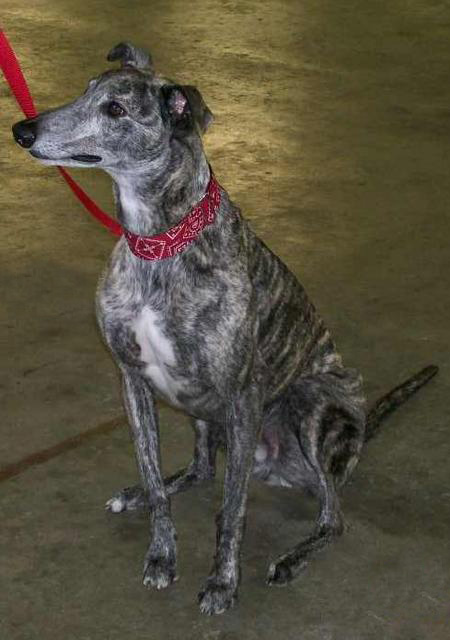
Is it true that greyhounds can't sit? No. While a sit is not a natural position for most greyhounds and can be difficult to teach, greyhounds can sit if they are taught how. Some greyhounds have obedience titles to prove it. Greyhounds all sit as small puppies, but as they grow it becomes less comfortable for them and most stop sitting. That is why most greyhounds you see in photos are standing or laying down and rarely in the sit position.
Are greyhounds trained not to sit at the track? No. Greyhounds that have never been to a race track have the same difficulty with the position. It just isn't as comfortable for them as the average dog, because of the way they are built. In a sit position their hind end is not able to rest on the ground and is an inch or two above it.
Are greyhounds easy to train? Yes and no. Most are very intelligent and will learn things that are important to them, like when dinner time is and where the treats are kept, very quickly. They may even figure out how to open the cupboard and the food container and feed themselves. Most potty train in a few days. Greyhounds were not bred to look to people for guidance when they work, however, like a retriever or a herding dog. They were bred to hunt and chase and not be distracted by the crowds watching. They are also very lazy and seem to have a "what's in it for me?" attitude, which can make obedience training more challenging. They CAN do it and there are greyhounds with advanced obedience and agility titles. You just have to be a fun and interesting trainer to keep their attention, and keep lessons short so they don't get tired and bored.
Are greyhounds good with children? Yes! Most greyhounds are good with WELL BEHAVED children. Like any dog, they may growl to let you know they don't like something or as a warning. Like all dogs they may bite if injured or provoked. Research done by Dr. James Serpell, indicates that Greyhounds are the least aggressive breed of dog though. The Greyhound scored 1.08 on his doggie aggression index. This was the lowest score given out of the 33 breeds studied. A very good resource for learning to handle potential problems between dogs and children is the book "Childproofing your Dog" by Brian Kilcommons and Sarah Wilson.
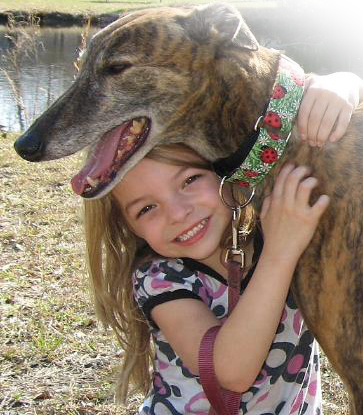 Why do so many greyhound descriptions say they need a home with no children if they aren't aggressive? For many reasons. We automatically list a dog as "older children only" or "no kids" if a dog has had any grumpiness over space or food or has ever been growly and snappy - even if that behavior is not aimed at children or even humans at all. If a dog has had a bad experience with a child (it happens much too frequently) and is afraid of or just chooses to avoid kids, we will also say it needs a home without small kids. A few greyhounds that are very shy, just don't handle the noise and movement of children well, and those usually do better in a home without kids. If a dog gets too excitable with stuffed toys and may accidentally hurt a child trying to get a toy or even is just big and active and might accidentally knock small children down, we give them an "older children only" rating.
Why do so many greyhound descriptions say they need a home with no children if they aren't aggressive? For many reasons. We automatically list a dog as "older children only" or "no kids" if a dog has had any grumpiness over space or food or has ever been growly and snappy - even if that behavior is not aimed at children or even humans at all. If a dog has had a bad experience with a child (it happens much too frequently) and is afraid of or just chooses to avoid kids, we will also say it needs a home without small kids. A few greyhounds that are very shy, just don't handle the noise and movement of children well, and those usually do better in a home without kids. If a dog gets too excitable with stuffed toys and may accidentally hurt a child trying to get a toy or even is just big and active and might accidentally knock small children down, we give them an "older children only" rating.
Are greyhounds good watch or guard dogs? No! See answer above. Most greyhounds are not aggressive and are not even usually barkers, plus they spend too much of their day sleeping to keep watch. They are large dogs and just seeing one would probably give a burglar reason to choose another house, though. If you have another breed of dog in your home that barks at strangers, your greyhound is more likely to learn to bark too, but some never do.
Why are most of the dogs on the available page marked as in process? We have a shortage of greyhounds. With only two active greyhound tracks in the US, few racing greyhounds were bred last year and that number continues to fall fast. There are adoption groups in every state that want greyhounds for their adopters and not enough to go around. Some groups can no longer get dogs at all. All the tracks in Florida closed at the end of 2020, eliminating two thirds of the racing greyhounds available. If you want a greyhound please contact us and get on our waiting list.
Greyhounds are awfully big, do they make good indoor dogs? Yes. Greyhounds have short fur, are naturally clean and have no doggy odor, so they make wonderful indoor dogs. They just won't be happy outside by themselves, because they have always been around humans or other dogs at the track. Although, they are raised outdoors as puppies and greyhounds as a breed were able to survive long before the invention of air conditioning; the breed is prone to heat stroke and has a low tolerance for cold because of their lack of body fat and short coat. Your retired racer is used to living in climate controlled kennels. Greyhounds develop thick coats that protect them from heat and cold and their bodies adapt during their early lives outside on farms. Once they are in the climate controlled race track kennel environment, their hair sheds out and their body gets used to the temperature. Putting a greyhound that has been in a climate controlled environment back outside suddenly in extreme temperatures can cause death. Sadly we lose retirees every year that overheat just playing in their own backyard for too long.
More Greyhound Trivia:
- Greyhounds don’t have much of a doggy odor so rarely need baths. When they do get a bath, many relax so much that they appear to almost faint, it is normal and nothing to worry about.
- Greyhounds are the fastest breed of dog reaching speeds close to 45 mph.
- Greyhounds have a very short, single layer coat so shed less than most breeds. Some greyhounds are fuzzier and shed more than others though.
- Greyhounds hearts are larger than the hearts of other dogs and they have a thicker left wall. Vets that aren’t familiar with greyhounds may be concerned about their “enlarged heart”. Because of their powerful hearts, most greyhounds have a low grade heart murmur that is totally normal. Because of racing and being bred to be athletes, greyhounds have very healthy hearts and rarely die of heart issues.
- Greyhounds have more red blood cells than other breeds and many have a universal blood type which make them excellent blood donors.
- Racing greyhounds receive tattoos in both ears as puppies. They can be identified by these tattoos by a phone call to the National Greyhound Association.
- Greyhounds rarely get hip displasia that is common in other large breeds, because only successful racers are ever allowed to breed.
- Because of their gentle, calm disposition most greyhounds make excellent therapy dogs.
Previous page: Road to Adoption
Next page: Choosing a Greyhound
